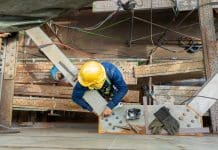Implementing digital solutions in construction has been long anticipated to revolutionise the way projects are executed; however, there still seems to be a gap between the rhetoric and the actual implementation of said technology into projects
It is important to recognise the challenges faced in adopting digital solutions in construction effectively, emphasising the need to shift focus from “flashy” technology and proof of concepts to long-term value and practical use cases.
Through my work, I have found that the barriers to successful implementation are primarily societal and organisational (socio) rather than technological (technical).
The capability is there, but through factors such as no clear use case, a lack of collaboration or not appreciating the socio-technical nature of the challenge, we are not using it to its fullest potential.
Understanding the use cases of digital technology in construction
One of the major issues hindering the progress of digital solutions in construction is the fascination with technology itself rather than the practical applications it can offer.
It is easy to focus on the end goal of having cutting-edge technologies or trends like digital twins, virtual reality or augmented reality without fully understanding the specific problems these technologies can solve. This discrepancy can be exacerbated by the marketing of solution providers.
As an industry, we need to be more focused on the journey – and the tangible use cases – and less motivated by technology for technology’s sake. This lack of clarity often leads to a mismatch between the technology’s potential and its actual value in addressing industry challenges.
To overcome the digital technology trap, the industry needs to shift its focus to identifying and understanding the real use cases. Instead of pursuing the latest trends or buzzwords, stakeholders should define the problems they want to solve and explore how digital can address those challenges.
By starting with specific use cases, the industry can ensure that solutions are implemented purposefully, aligning with the needs of projects and organisations. This is particularly apparent when considering hyper-cycle terms such as digital twins.
An example of using digital twins with a clear use case in mind was in our work at Hague City Hall in the Netherlands. To improve the performance and energy efficiency of the building, Arup developed a digital twin that accurately simulated the behaviour of the building.
By leveraging machine learning capabilities, the twin predicted the outcomes of various interventions and identified optimal system settings, with these interventions then enacted into the building.
This approach helped reduce energy consumption by well over a third (39%), enhancing user comfort while avoiding the need for costly investments. This is a perfect demonstration of how digital can be implemented effectively, with maximum impact.
The socio-technical challenge of implementing digital solutions in construction
The use of technology is not just a technical challenge; it is a socio-technical challenge. While the technology itself has proven its capabilities, the barriers to progress lie on the social side, including skills, policies, regulations, legal frameworks and procurement processes.
These social factors often create roadblocks that prevent the smooth integration of technology into projects. Addressing these concerns requires collaboration and cooperation among stakeholders to develop the necessary skills, adapt policies and establish supportive frameworks that enable technology adoption.
Balancing short-term cost and long-term value of digital solutions in construction
Another key challenge is the prioritisation of short-term cost savings over long-term value creation. In an effort to reduce immediate expenses, decision-makers may opt to exclude technology from projects or limit the adoption.
However, this short-sighted approach can hinder the future value potential of assets. As data starts to be more widely recognised as an asset, organisations that leverage technology effectively will have a competitive advantage.
The future of digital solutions in construction
To unlock the full potential of digital technology, stakeholders must adopt a forward-looking perspective. They should consider the future value of investments in digital technology and prioritise long-term benefits over short-term cost savings. This requires a mindset shift that focuses on the journey of digital technology adoption, recognising that it is an ongoing process rather than a destination.
Moreover, industry players should collaborate to address the societal and organisational challenges that hinder technology implementation, such as skills development, policy adaptation, and the establishment of supportive frameworks.
The industry has witnessed remarkable advancements in technology, but the implementation of these innovations remains a significant obstacle. By shifting the focus from technology itself to practical use cases, addressing socio-technical barriers and emphasising long-term value creation, stakeholders can pave the way for successful technology integration.
Finally, it will be crucial to collaborate as an industry as we push for the complete use of innovative digital technology. Only by working together can the industry fully leverage the potential of technology to drive positive change, improve project outcomes and create smarter, more valuable assets for the future.
Simon Evans

Global digital energy leader & global digital twin leader
Arup
Tel: +44 (0)207 636 1531

















